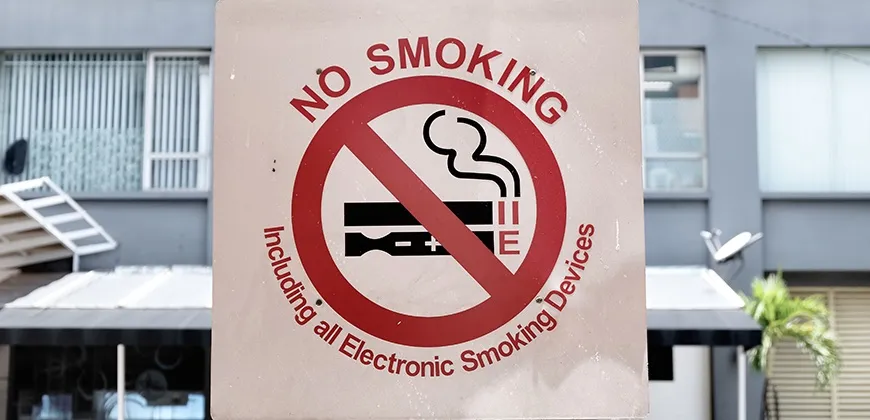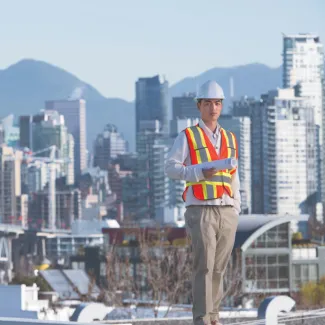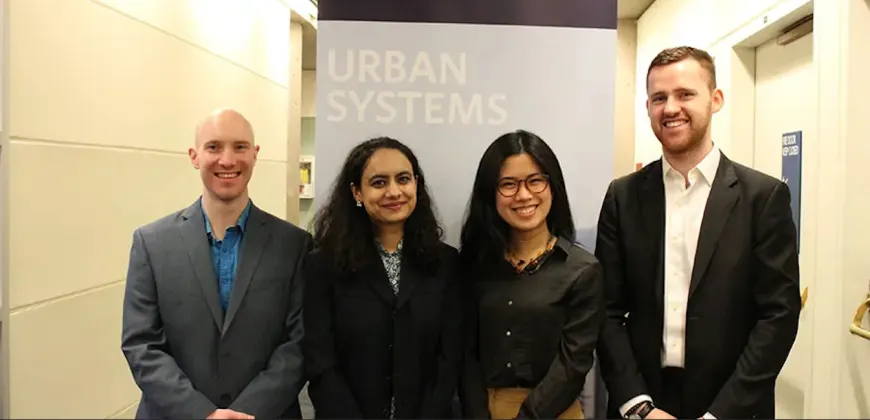Investigating the interplay of health policy and the built environment
A research project conducted by three Master of Engineering Leadership (MEL) in Urban Systems students explored whether designated smoke- and vape-free areas were successfully deterring people from lighting up.

What role can urban design and infrastructure play in promoting public compliance with restrictions on smoking and vaping in public places? A research project conducted by three Master of Engineering Leadership (MEL) in Urban Systems students explored whether designated smoke- and vape-free areas were successfully deterring people from lighting up. The group also offered a series of recommendations to support greater compliance.
MEL students Ece Cam, Joyce Chiamaka Nworjih and Alejandra Padron – along with two students from outside the MEL program – worked on the project as one of three major assignments in Dr. Martino Tran’s Urban Systems Analysis & Planning class. The project was originally initiated by UBC’s SEEDS program, which enables students, staff, faculty and community partners to use the UBC Campus as a living laboratory to explore and advance sustainability practices. SEEDS was curious to know whether people were complying with new smoke- and vape-free restrictions around UBC’s health precinct and library gardens.
“The decision to create a smoke-free area in the health precinct was made years after the buildings and landscaping were completed,” says Joyce. “That adds challenges you might not face if you were designing the area now, when you could make design decisions to support compliance. It’s easier to foster compliance from the beginning, rather than applying a deterrence model after the fact.”
The students completed extensive field observations over a one-week period in March 2020, looking both at active smokers and vapers as well as evidence of cigarette butts in the study area. They also noted the presence or absence of signs posting smoking rules and the surrounding infrastructure that may have influenced behaviour.
“We found hotspots for smoking throughout the health precinct,” says Alejandra. “Some of these hotspots were aided by urban design features – for example, some no-smoking areas actually had benches with built-in ashtrays that had been installed in the 1960s and not removed.”
The students noted that cigarette butts tended to accumulate in areas that had enabling structures, such as overhangs and awnings. “Many butts were also in out-of-the-way areas, such as behind buildings and near backside doors,” adds Ece.
In addition to the mixed messages communicated by benches with built-in ashtrays in a non-smoking area, the team noted confusing and inconsistent message on signage. While some signs said smoking was prohibited within six metres of doorways, windows and air intakes, others specified the distance as eight metres.
The group conducted an extensive literature review of legislation and policy, as well as the smoke-free initiatives of other health-care facilities and post-secondary institutions. This research, along with their field observations, enabled the students to propose recommendations to achieve greater compliance.
Their primary recommendation focused on the need for more informative and consistent signage, strategically placed near hot spots. They also suggested using public art and other placemaking tools to more clearly define smoke-free zones.
“The existing signage elements tend to be small and not informative,” says Ece. “We saw an opportunity to use public art to grab people’s attention and create awareness that this is a non-smoking area.”
The students also advocated for a survey of smokers and vapers to better understand their motivating behaviour, from which more specific recommendations could be developed in the future to promote compliance. Finally, they offered ideas for managing non-compliance through clear policies of escalating enforcement, from verbal warnings through to a fine.
Reflecting back on the project, Ece, Alejandra and Joyce say it highlighted the important role that the built environment can play in supporting public policy goals.
“This project highlights the value of using policy and design to shift behaviour,” says Alejandra. “Smoke-free areas around hospitals are critical, and finding ways to support that is important work.”



